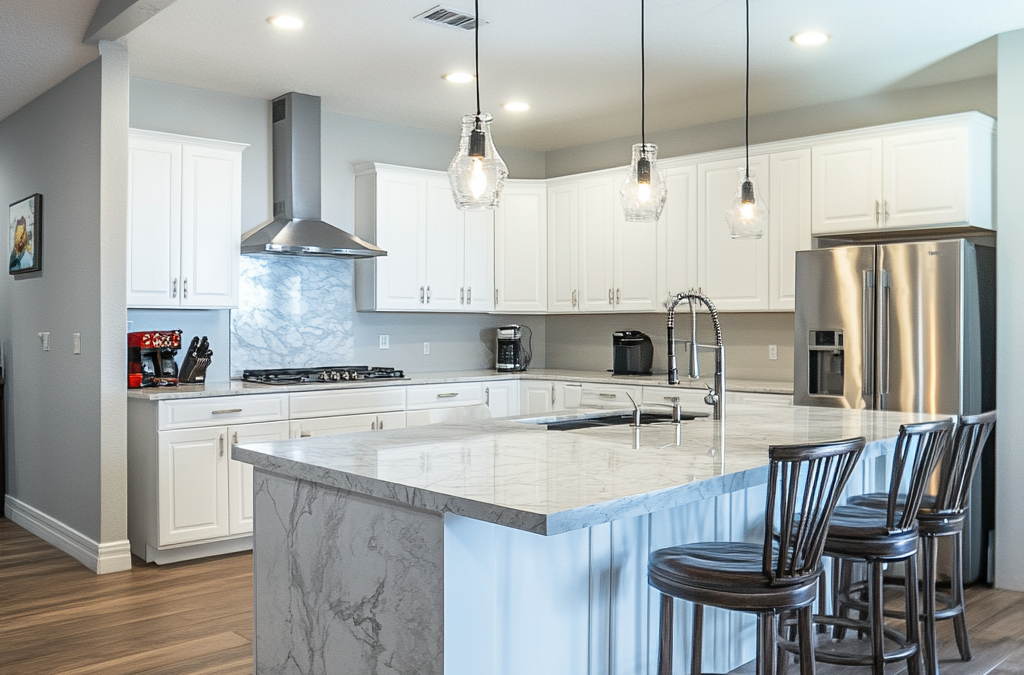Kitchen Remodeling Trends That Defined 2012 and Still Inspire Today
As innovation sweeps through the remodeling industry, it’s always insightful to revisit trendsetting years — and 2012 was pivotal. That year marked a transformation in how we think about kitchen design: a blend of modern flair with functional sophistication. At Ram Remodeling in Bloomington, MN, we understand that timeless trends never go out of style; they simply evolve.
1. Modern Minimalism with Transitional Design
The trend toward cleaner, sleeker lines saw a shift away from ornate cabinetry and excessive embellishments. Instead, homeowners favored transitional design — a harmony of modern simplicity and traditional warmth.
European influence played a critical role, introducing flat-panel cabinets, hidden hardware, and integrated appliances. These elements brought visual calm to once-busy spaces, aligning with growing preferences for open floor plans and uninterrupted lines.
2. Revolution in Cabinet Functionality
A significant 2012 breakthrough was the expansion of cabinet functionality. Traditional swing doors gave way to lift-up, retractable, and bi-fold mechanisms. These innovations weren’t just aesthetic — they enhanced access, reduced motion clutter, and made upper cabinets more ergonomic.
Pull-out spice racks and under-cabinet storage further optimized vertical and lateral spaces, laying the groundwork for today’s hyper-functional smart kitchens.
3. Intentional Contrast Over Uniformity
Rather than insisting on matchy-matchy cabinetry and countertops, 2012 was the year designers embraced intentional contrast. Bold kitchen islands in complementary or even clashing materials became centerpieces. Think: dark-stained oak islands in a white lacquered kitchen or stainless-steel bases paired with quartz countertops.
This shift gave homeowners a new way to express creativity without losing cohesion in their design.
If you want to know more about what made 2012’s kitchen design iconic, click here.
4. Smart Use of Every Square Inch
As urban living increased, maximizing space became a necessity, not a luxury. Frameless cabinets, toe-kick drawers, and under-island beverage fridges began appearing in both large and compact homes.
Fact:
A National Kitchen & Bath Association (NKBA) report from 2012 showed that 50% of designers emphasized functionality over style in client consultations — a major shift from previous years.
Pullout pantry towers, lazy Susans with 360-degree rotation, and drawer dividers helped turn every inch of cabinetry into purposeful real estate. This efficient mindset has only grown more relevant with rising housing costs and smaller homes.
5. Integrated Storage That Disappears
Flat cabinetry with hidden handles or push-to-open mechanisms gave kitchens a polished, flush appearance. In 2012, this was a bold departure from traditional knob-and-handle sets. By making storage disappear into the wall, designers made open-concept kitchens feel even more expansive.
Today, many of these features are automated or smart-enabled — a natural evolution from their 2012 origins.
6. Eco-Conscious and Tech-Aware Beginnings
Although sustainability wasn’t as mainstream then as now, 2012 marked the beginning of conscious design. More remodels included LED lighting, energy-efficient appliances, and low-VOC finishes.
These early choices helped shift homeowner behavior toward greener living and set the stage for the smart kitchen revolutions of the 2020s.
Our Legacy of Style and Innovation
As a family-owned remodeling business rooted in Bloomington since the 1970s, Ram Remodeling brings deep industry knowledge and a reputation built on trust. Our commitment to crafting timeless, functional spaces has helped us guide homeowners through every style wave — including pivotal design moments like those from 2012. With decades of experience and a passion for blending old and new, we ensure your kitchen isn’t just updated — it’s future-ready.
FAQs
Are 2012 kitchen trends still relevant in 2025?
Yes. Many of the functional and minimalist features introduced in 2012 have become staples in modern kitchens.
What is transitional kitchen design?
It blends contemporary elements like flat-front cabinetry with classic accents such as crown molding or natural wood, offering balance and appeal.
Can I still find cabinets with innovative openings like in 2012?
Absolutely. Those lift-up, retractable, and bi-fold mechanisms are more advanced today and widely available.
What’s the benefit of mixing kitchen island materials?
It adds visual depth and personalization, often making the island a true centerpiece.
How do I make the most of a small kitchen space?
Incorporate pullouts, under-sink organizers, toe-kick drawers, and multi-purpose islands with built-in storage.
Conclusion
The 2012 wave of kitchen remodeling trends fundamentally changed the game — from embracing simplicity and smart storage to championing contrast and customization. These shifts are not just historical; they’re foundational to how we remodel kitchens today. With Ram Remodeling as your partner, your kitchen can reflect the best of every era while being ready for the next.
